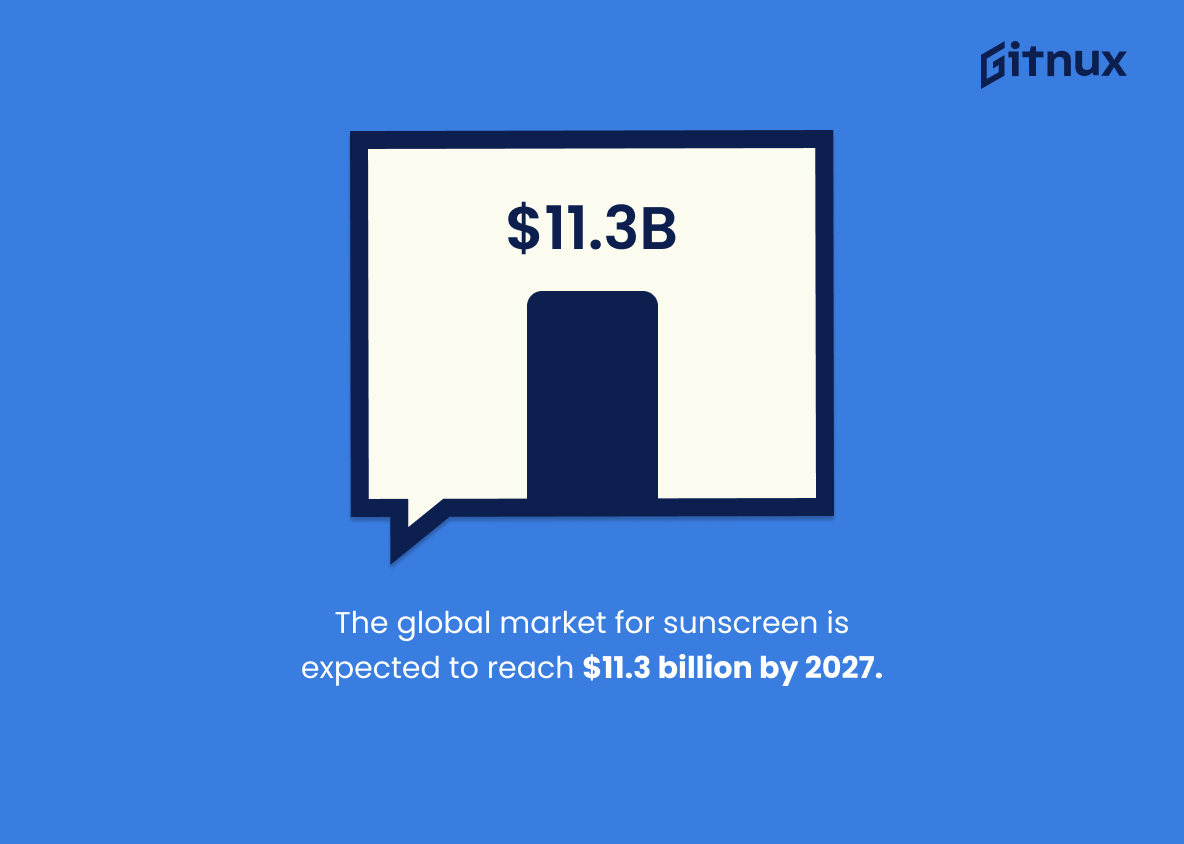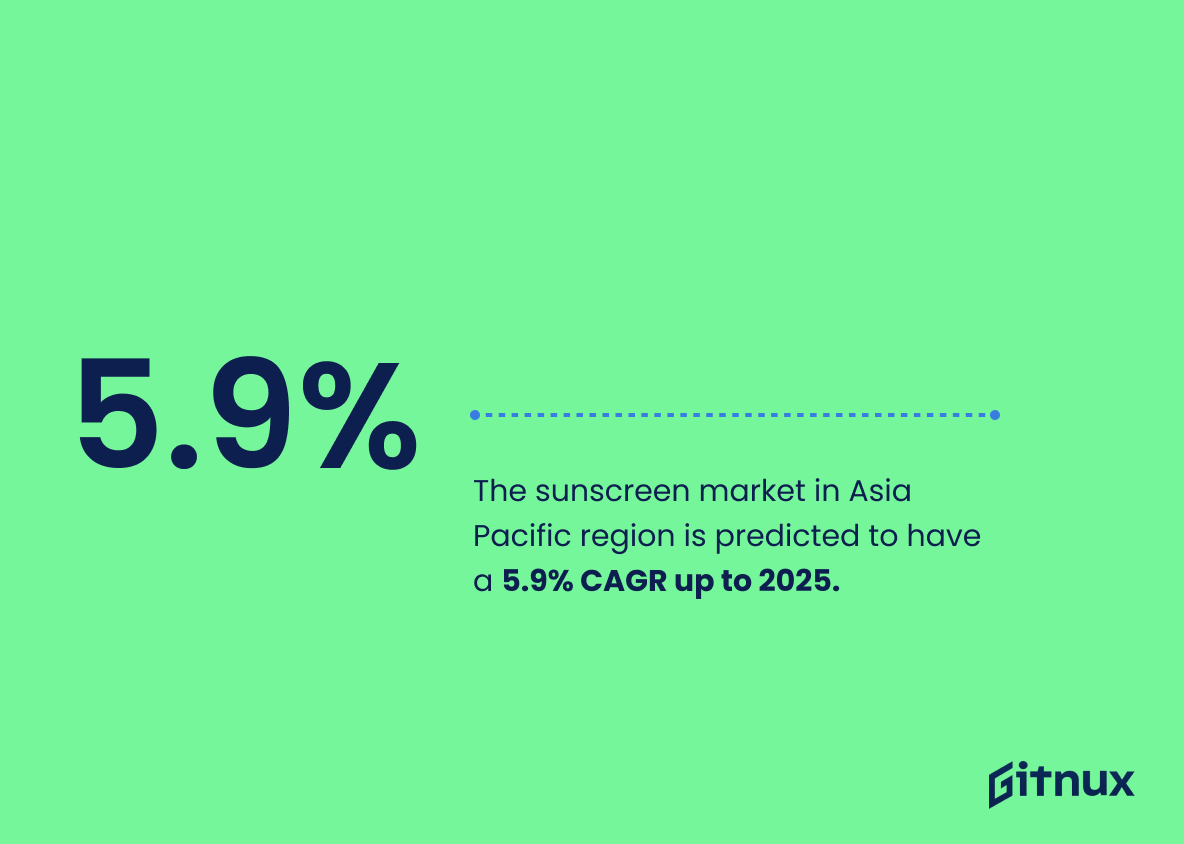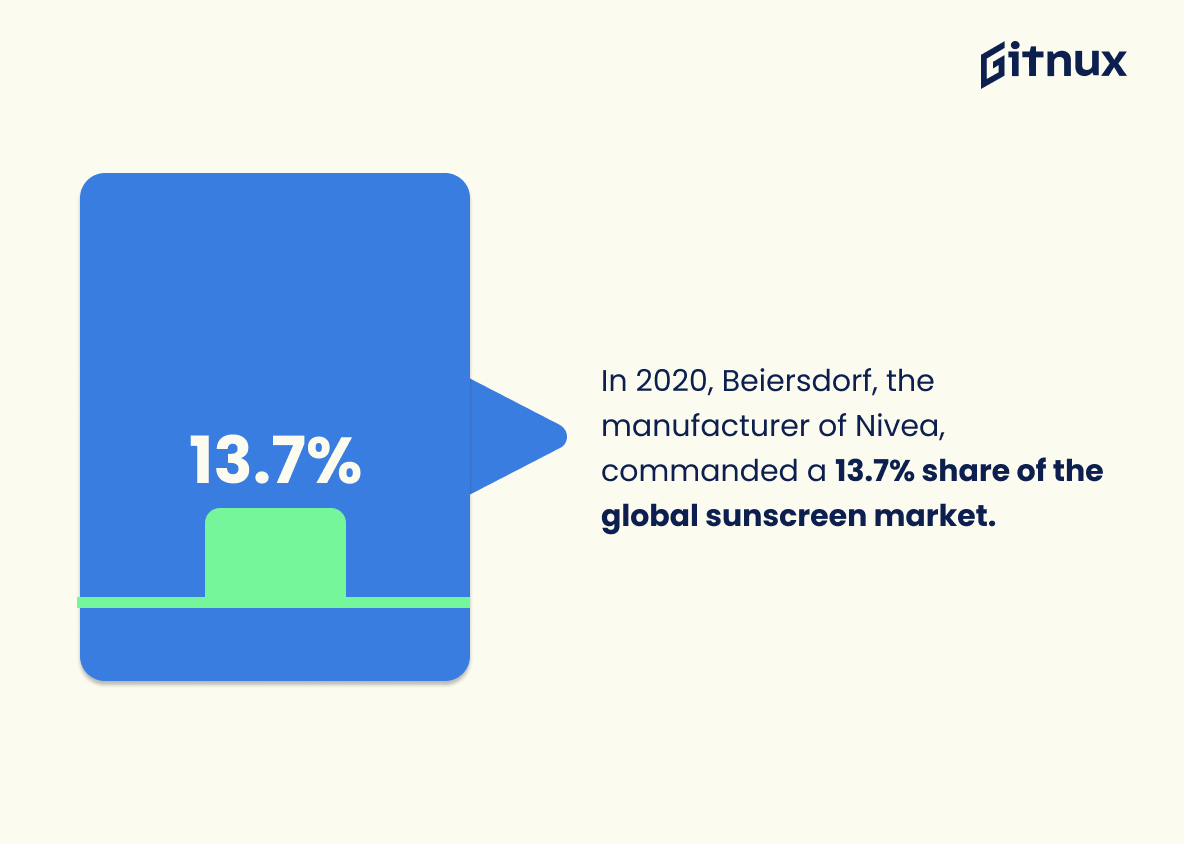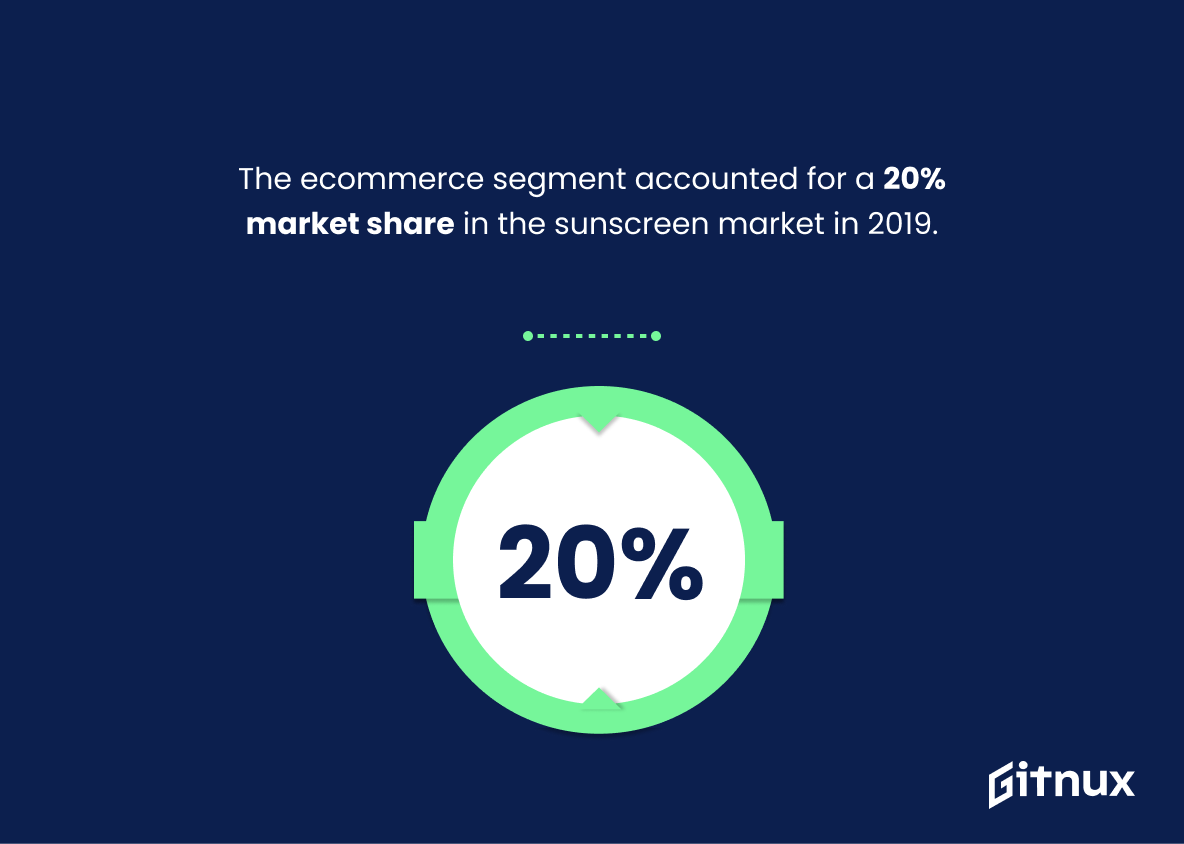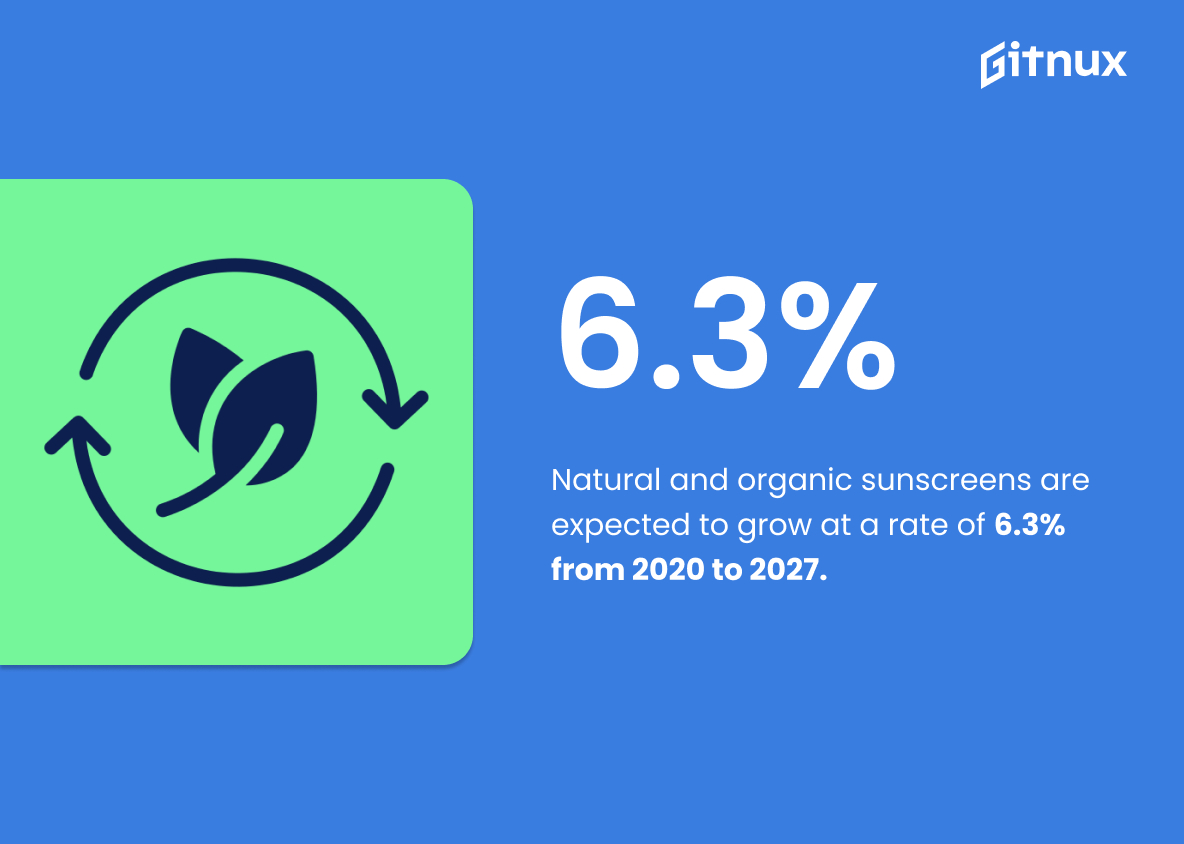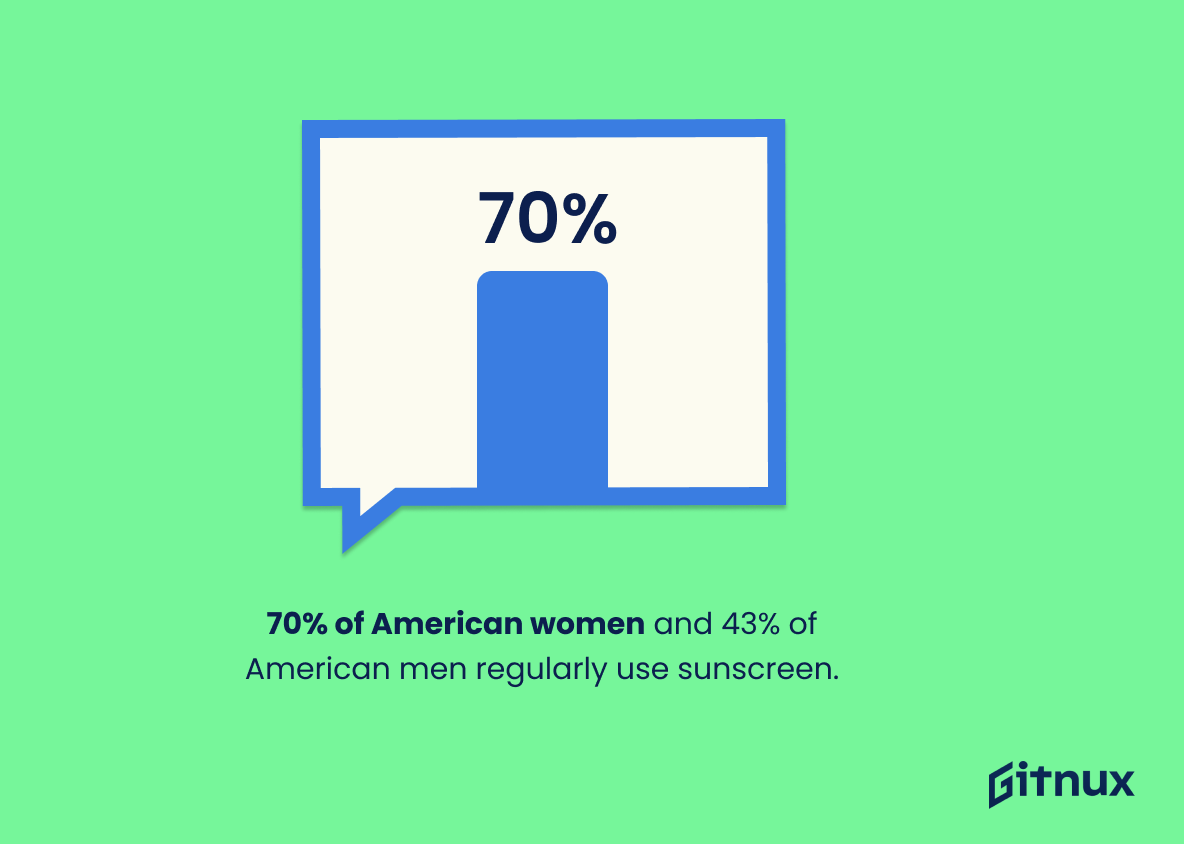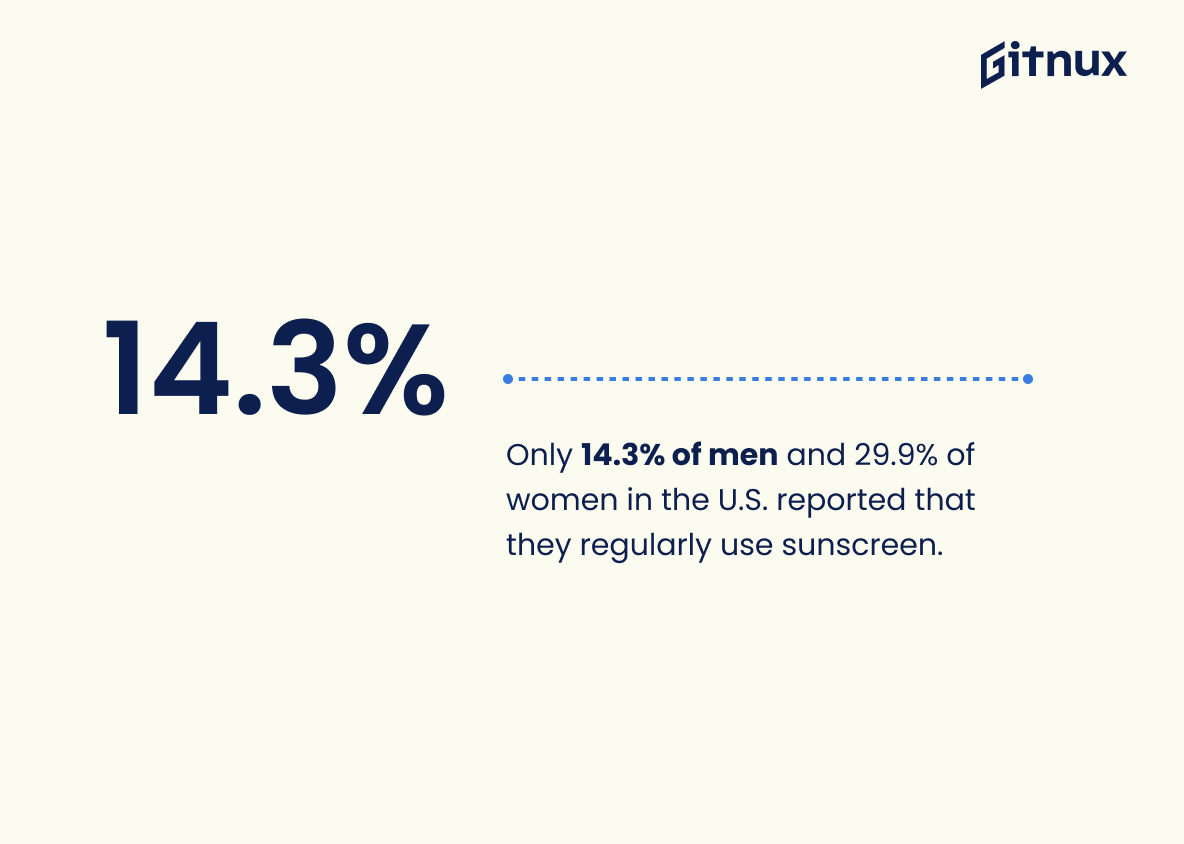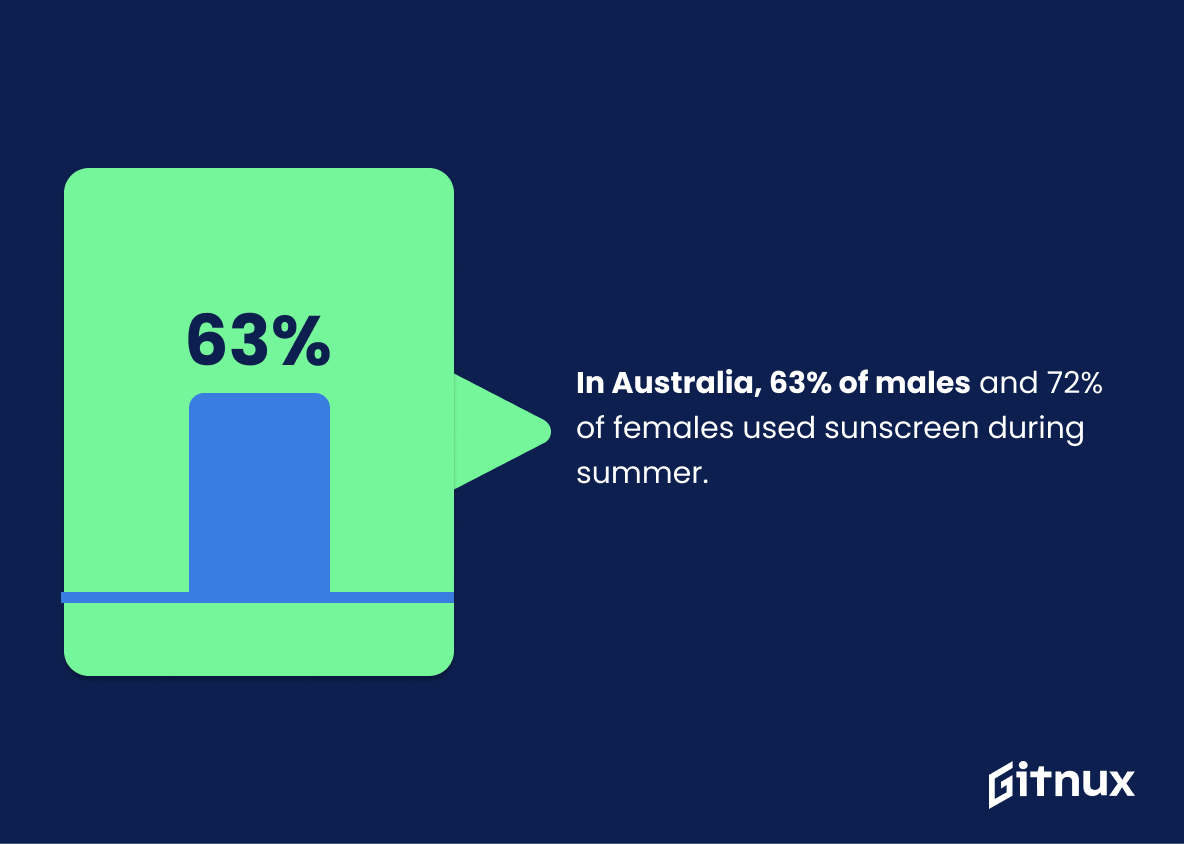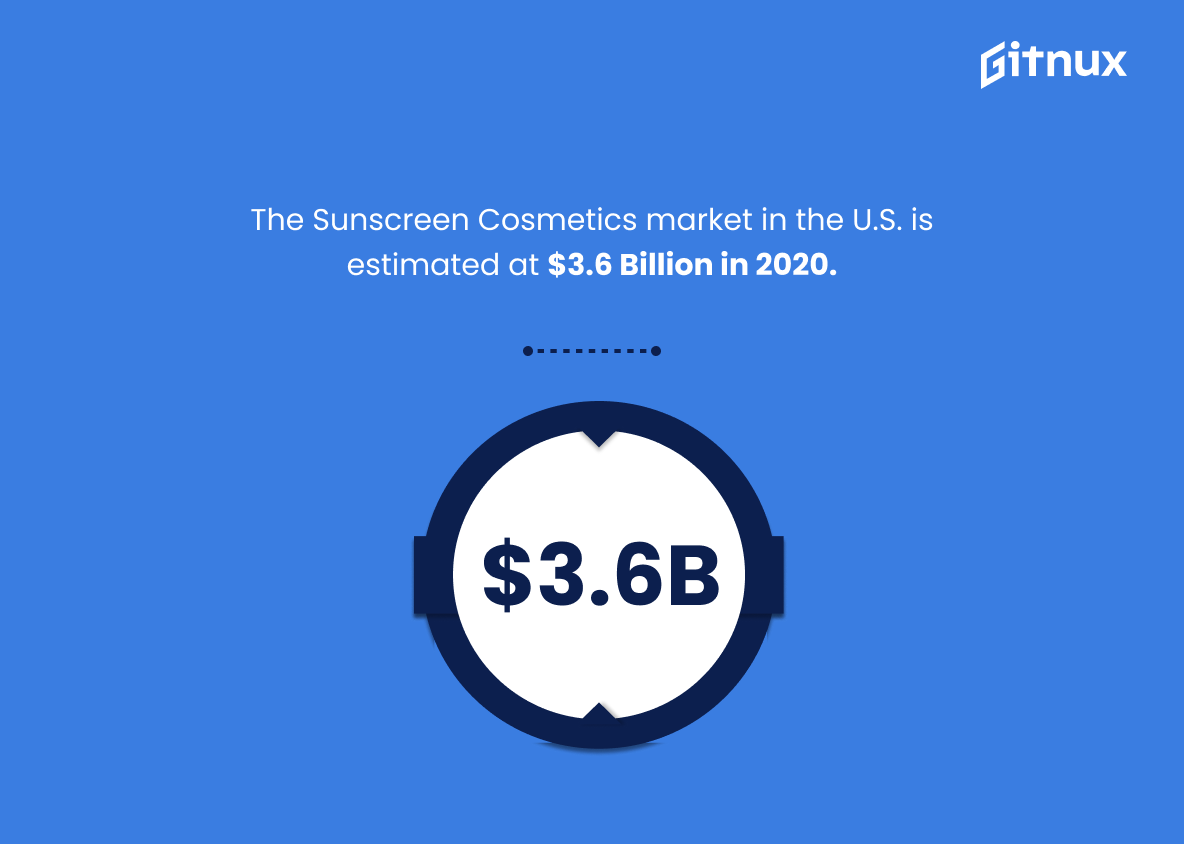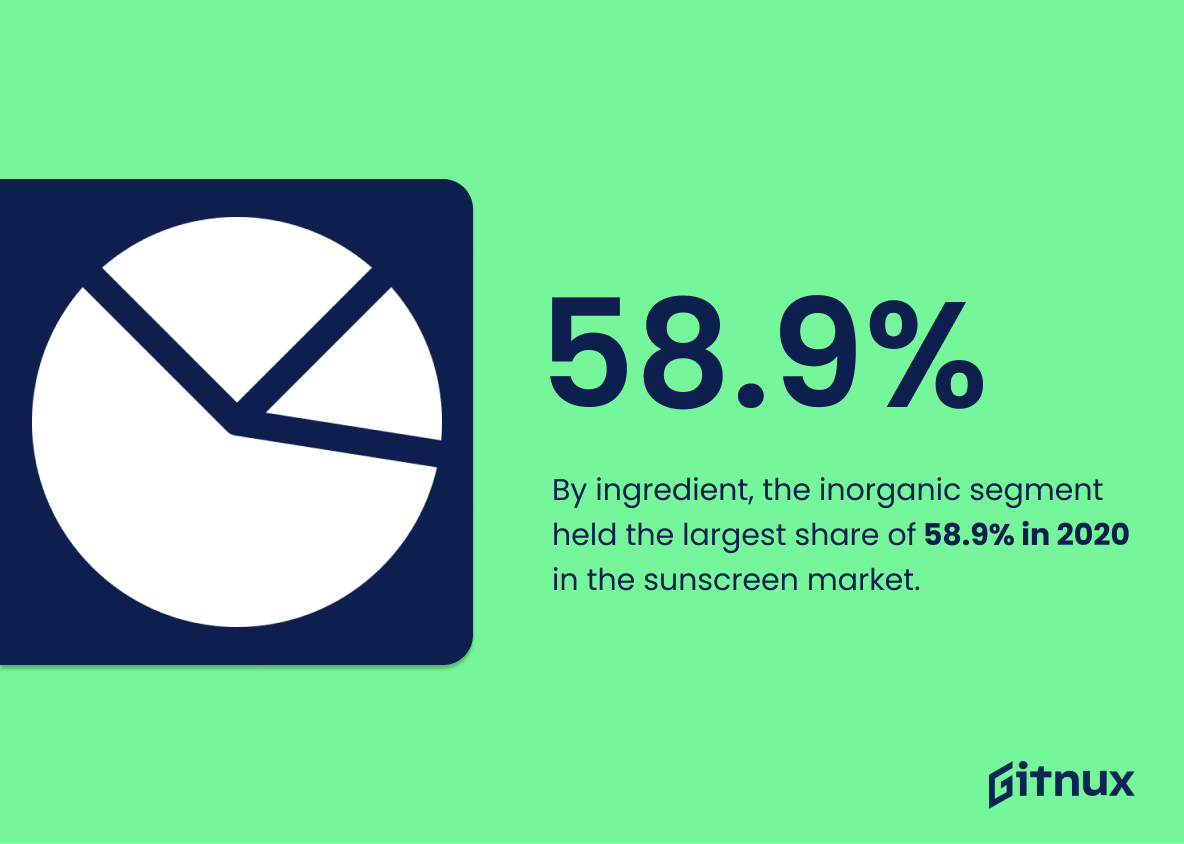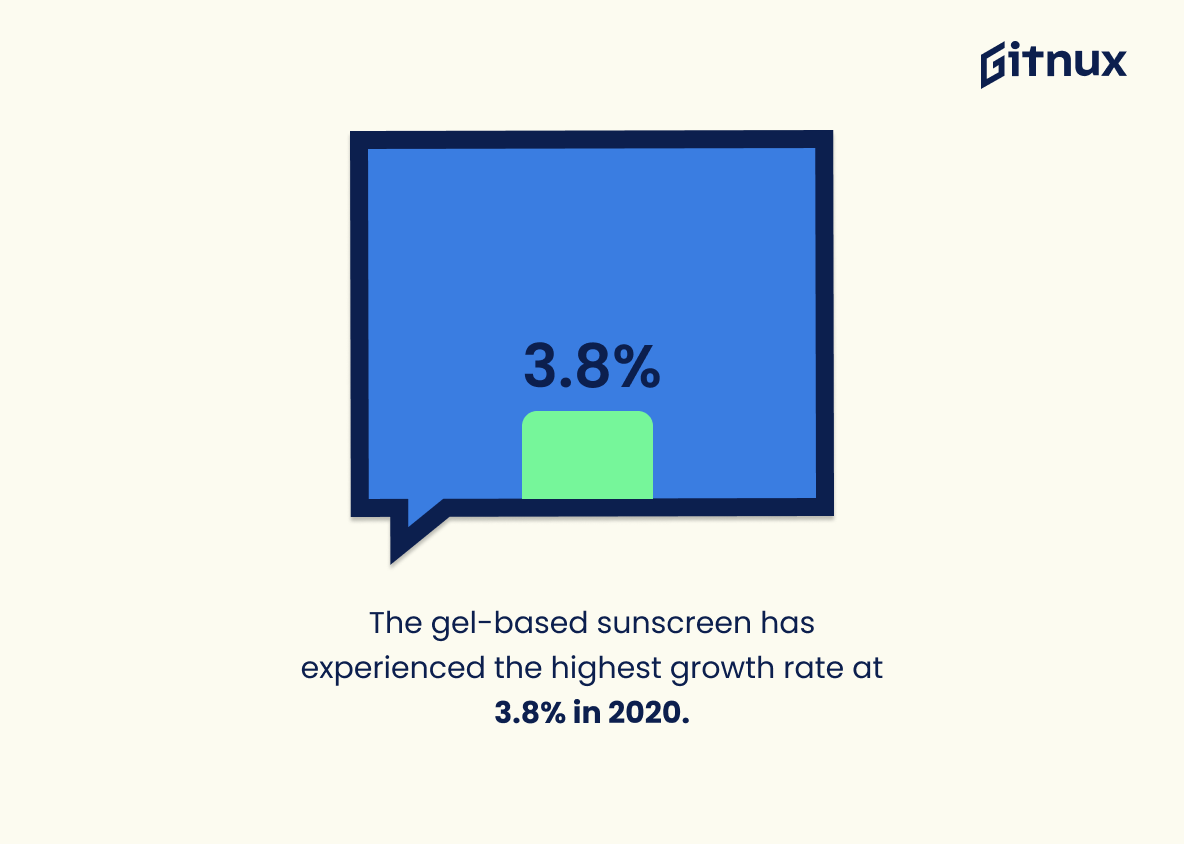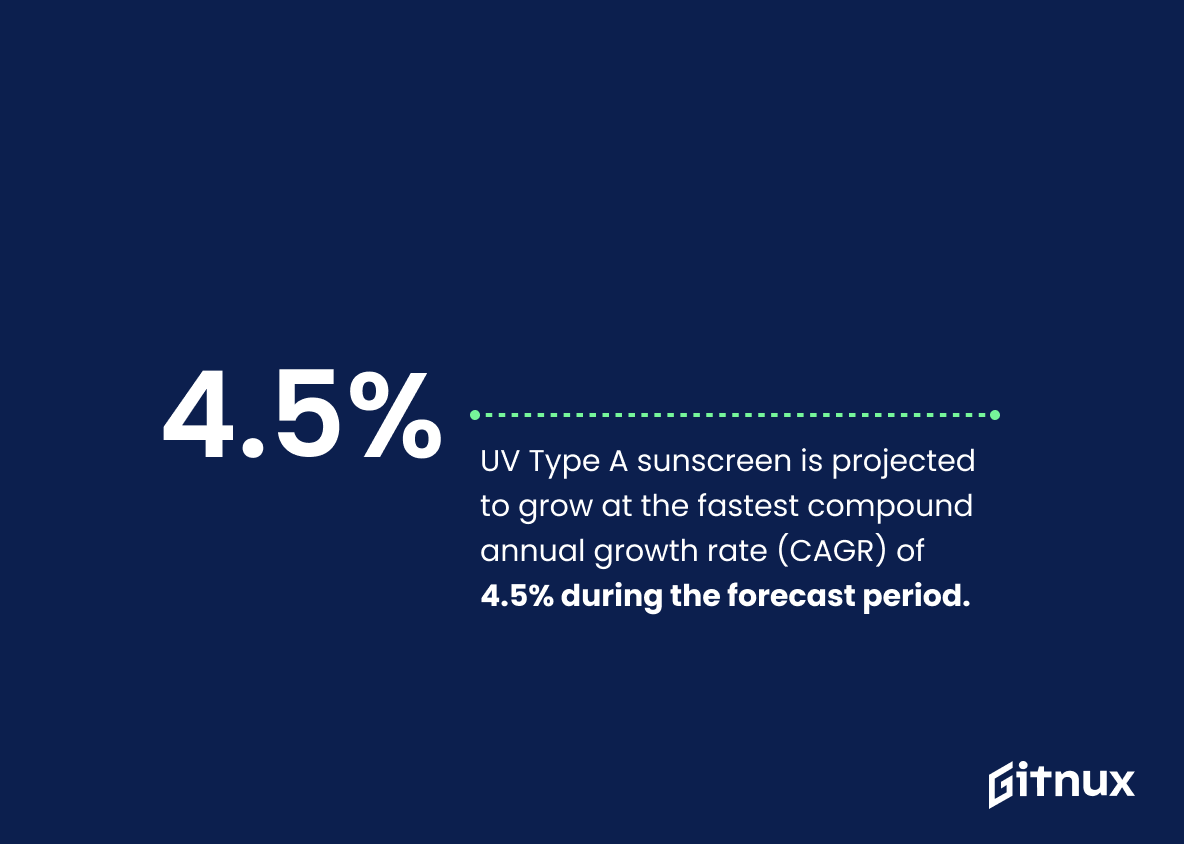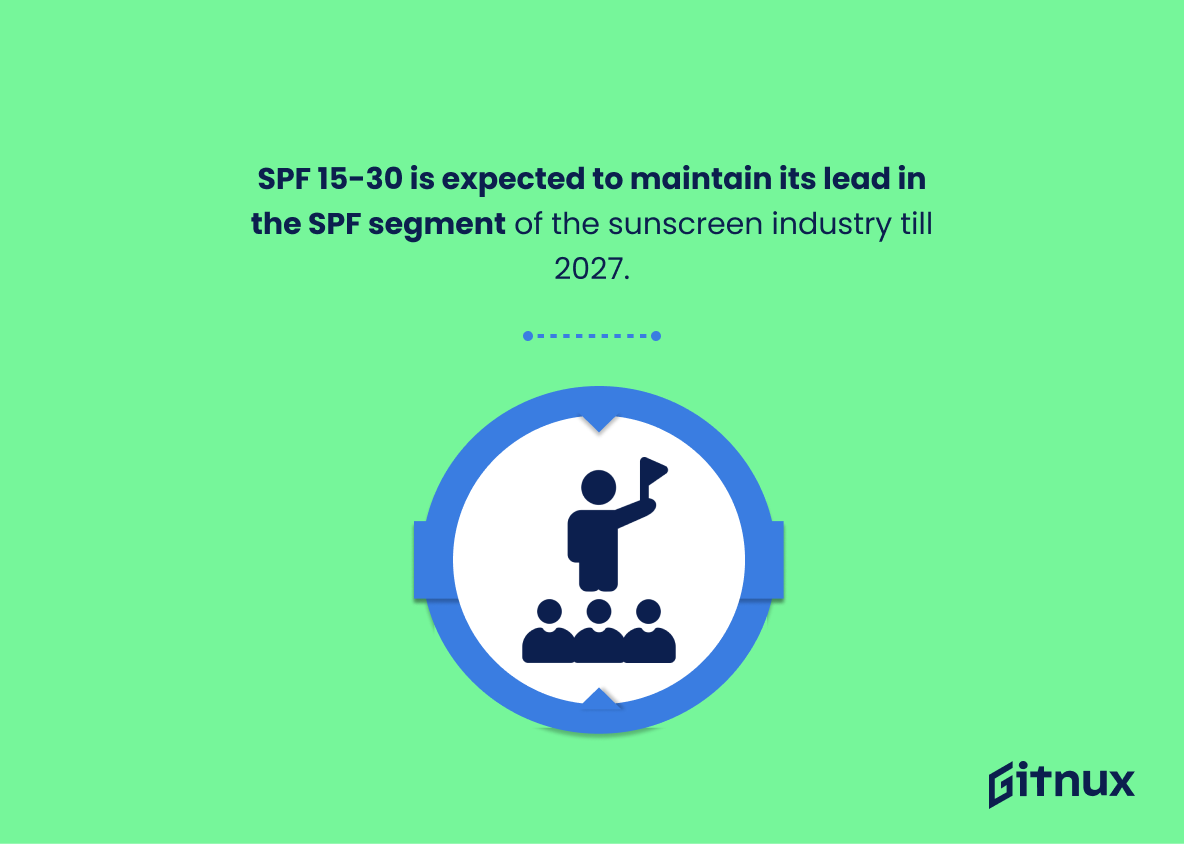Stay with us as we delve into the dynamic world of the sunscreen industry, a global market that actively protects our skin from the harmful effects of the sun. This fascinating sector, constantly innovating with new formulations and products, has experienced significant growth and transformation over the years stemming from increasing awareness concerning skin health. In this blog post, we’ll be unmasking pivotal sunscreen industry statistics, examining market trends, and exploring the key drivers of its impressive growth. Whether you’re a health enthusiast, a skincare advocate or an informed investor, understanding these insights can shed light on the sector’s prospects and potential, while highlighting the importance of sunscreen in our daily lives.
The Latest Sunscreen Industry Statistics Unveiled
The global sunscreen market size was valued at $8.3 billion in 2020.
Charting the course of the sunscreen industry, it is striking to observe that the global market was pegged at an impressive $8.3 billion in 2020. One can glean from this robust figure that sunscreen products are not merely a blip on the radar; instead, they represent a significant category in the beauty and care industry. This valuation introduces readers to the immense scale and potential boom of this market, serving as a springboard to appreciate the depth and breadth of the sunscreen landscape. Against this backdrop, the numerous statistics laid bare throughout the blog gain a more profound meaning, giving weight to trends, patterns, and predictions tied to this billion-dollar industry.
The global market for sunscreen is expected to reach $11.3 billion by 2027.
Forecasting an impressive $11.3 billion worth by 2027, the global sunscreen market emerges as a giant player in the skincare industry landscape. This prediction is not just a number in a sea of figures; it’s a powerful testament to the sunscreen industry’s exponential growth, market influence and its future potential. Highlighting this anticipated progress can provide crucial insights for businesses, investors, and consumers alike in the vast landscape of the skincare sector. From investment decisions to highlighting consumer trends, this number unbolt the enormous opportunities present within the sunscreen industry. After all, thriving in a market is about anticipating change– and this number is a glance into a future dominated by the sunscreen industry.
The sunscreen market in Asia Pacific region is predicted to have a 5.9% CAGR up to 2025.
“Imagine riding a financial surfboard, carried by an enticing wave of 5.9% Compound Annual Growth Rate (CAGR) in the Asia Pacific region’s sunscreen market. This means waterproof opportunity till 2025 for entrepreneurs and investors alike in an ocean of escalating skincare consciousness. This speed of growth, signaling an emerging market trend, can wildly boost planning strategies, forecasting, and target-audience identification. So, strap your sun-protective gear, this golden sunray of statistic paints an idyllic sunscape for the future of the sunscreen industry.”
In 2020, Beiersdorf, the manufacturer of Nivea, commanded a 13.7% share of the global sunscreen market.
Highlighting Beiersdorf’s 13.7% stake in the global sunscreen market in 2020 offers a unique perspective on the magnitude of competition in this industry. As the producer of Nivea, a globally recognized brand, its healthy market share signals the impact of strong branding and reputation in the sunscreen field. Furthermore, this valuation not only illustrates Beiersdorf’s current position but also sets a benchmark for other companies aspiring to penetrate this market. Tracing its market share over time could also provide valuable insights into trends and shifts in consumer behavior and loyalty within the sunscreen industry.
The ecommerce segment accounted for a 20% market share in the sunscreen market in 2019.
Unraveling the sunscreen industry’s statistical tapestry, we stumble upon an intriguing pattern – The ecommerce segment owning a 20% chunk of the market in 2019. This isn’t just a number, it’s a statement – a testament to the emergent power of digital marketplaces in shaping the sunscreen industry. Being a beacon of disruption, this figure cues industry players to recalibrate their strategies towards capitalizing on online platforms. Equally importantly, consumers are voting with their clicks, revealing comfort with and trust in, online outlets for their sunscreen purchases. This peculiarity in the data offers a persuasive narrative of the industry’s future, poised at the cusp of digital reliance and expansion.
Natural and organic sunscreens are expected to grow at a rate of 6.3% from 2020 to 2027.
Highlighting this statistic in a blog post about Sunscreen Industry Statistics brightly illuminates a significant trend in consumer preference towards natural and organic products. With an anticipated growth rate of 6.3% from 2020 to 2027, it underscores a market shift that cannot be ignored. This potential seven-year progressive surge speaks volumes about the increasing influence of health-conscious and eco-friendly consumers. By tapping into this green shift, both established sunscreen brands and emerging players stand to bask in profitable growth, making this statistic a critical beacon in strategic market navigation.
70% of American women and 43% of American men regularly use sunscreen.
Delving into the kaleidoscope of the sunscreen industry, one simply cannot ignore the shimmering fact that a solid majority of 70% American women and a significant 43% American men habitually reach out for sunscreen. This captivating data elegantly showcases a pivotal trend in consumer behavior, highlighting a higher frequency of sunscreen usage especially among women. Signal in the noise, it demonstrates the prevalent health awareness and the preventive skincare measures undertaken by the population, establishing the sunscreen industry as a frontrunner in the health and beauty sector. In this regard, it paves the road for more focused advertising, targeted gender-based product development, and enlightens us on the market potential, thus steering the sail of the cosmetic industry more effectively.
Only 14.3% of men and 29.9% of women in the U.S. reported that they regularly use sunscreen.
Diving into the numbers, one encounters herein a pool of untapped potential within the sunscreen industry. The data showcases a glaring gap – a multitude of individuals, a massive 85.7% of men and 70.1% of women in the U.S., don’t regularly use sunscreen. This lack of regular use could be attributed to various factors, perhaps low product promotion, deficiency in awareness about sun damage, or simply a lack of appealing sunscreen options. Regardless, those legions of non-users represent a substantial market base that is yet to be addressed. Therefore, this statistic is a wake-up call for sunscreen producers to step up their game. Through innovative marketing strategies, educational campaigns about the need for sun protection and introduction of new, consumer-friendly products, they can aim to convert this vast reservoir of non-users of sunscreen into regular users and substantially drive industry growth.
In Australia, 63% of males and 72% of females used sunscreen during summer.
Unveiling the veil of numbers, in the sun-soaked territory of Australia, an intriguing divergence surfaces in the sunscreen usage habits of men and women. With approximately four out of every seven men (63%) and about three out of every four women (72%) reaching for their SPF protection during summer, we’re given a fascinating glimpse into the potential untapped markets and sun safety behaviours in Australia. A clear narrative unfolds from these percentages, igniting discussions on gender differences in sun care regimes, shaping the foundations of targeted marketing campaigns and stirring intuitive product innovation. Add in a dash of gender perspective, and you’ll find a robust driving force that could influence the complexion of the sunscreen industry in the coming years. These crisp numbers, therefore, not merely paint a picture of present sunscreen usage, but act as the lodestar guiding industry stakeholders towards envisioned future possibilities.
The Sunscreen Cosmetics market in the U.S. is estimated at $3.6 Billion in 2020.
Unveiling this multi-million-dollar figure illuminates the tremendous size and potential of the Sunscreen Cosmetics market in the U.S. An impressive $3.6 Billion in 2020 alone unfolds a thriving industry, echoing a profound consumer demand for sunscreen products. In the context of a blog post about sunscreen industry statistics, this underscores the formidability of the market, and potentially the increasing consciousness towards skincare and specifically sun protection among the U.S. population. This hefty sum could offer opportunities for new entrants seeking a slice of the market. Additionally, seasoned sunscreen manufacturers could capitalize on these insights to fine-tune their business strategies, feed product innovation, and consequently augment their market share. This is a magnified snapshot of reality for marketers, investors, and even sunscreen enthusiasts, painting a vivid picture of an industry that’s much more than skin-deep.
By ingredient, the inorganic segment held the largest share of 58.9% in 2020 in the sunscreen market.
Reflecting on the dominance of the inorganic segment in the sunscreen market, with a commanding share of 58.9% in 2020, paints a fascinating picture about consumers’ preferences and the industry’s direction. It provides a clear-cut indication of the significant role inorganic ingredients play within the sunscreen production sphere. Moreover, it underscores the market’s potential areas for growth, innovation, and increased competition. In the context of Sunscreen Industry Statistics, this insight allows readers to grasp the existing industry dynamics, thus, fostering a deeper understanding of market trends, investment opportunities, and product development strategies for both existing and potential market entrants.
The gel-based sunscreen has experienced the highest growth rate at 3.8% in 2020.
Peering into the illuminated landscape of the Sunscreen Industry, this jewel of statistic throws a spotlight on the evolving consumer behavior in 2020. The burgeoning growth rate of 3.8% for gel-based sunscreens indicates an increased affinity for this product variant. This could be attributed to its unique features such as quick absorption, non-sticky feel, or the ability to work well under makeup, resonating well with the consumer base. In the grand scheme of the sunscreen industry, this data point paints a critical portrait of market trends and preferences. Switching our lens to the business side, stakeholders are endowed with valuable insight to strategize their product development, marketing, and distribution towards gel-based sunscreens to capitalize on this growing demand.
UV Type A sunscreen is projected to grow at the fastest compound annual growth rate (CAGR) of 4.5% during the forecast period.
Unveiling the untold story of this statistic paints a captivating picture of the sunscreen industry. It forecasts a thriving future for UV Type A sunscreen as it stands to sprint ahead with an impressive compound annual growth rate (CAGR) of 4.5%. This projection brings to light the increasing consumer preference towards this sunscreen type. The undercurrent of this forecast suggests not only the mounting awareness about the harmful effects of Type A UV radiation but also the trust in the efficacy of such sunscreens to offer protection against it. So for those who are part and parcel of the sunscreen industry or are planning to dip their toes in, this statistic serves as a compass, guiding their investment decisions and strategic planning to take advantage of the roaring tide.
Sun protective clothing is also expected to grow at a CAGR of 4.5% from 2019 to 2025.
Analysing the statistics around sun protective clothing and its anticipated growth rate of 4.5% from 2019 to 2025 paints a vivid picture. Stepping into this radiant perspective, we should note the growing recognition of sun protective clothing as a significant player in sun protection. The sunscreen industry needs to consider this not as a deterrent, but as an opportunity to highlight the strengths of sunscreen in tandem with these clothes, thus marking a dynamical shift in our understanding of holistic sun protection. Furthermore, such growth could indicate a societal shift towards more comprehensive sun protection strategies, benefiting the overall sunscreen industry by creating a potentially broader, more receptive consumer base.
SPF 15-30 is expected to maintain its lead in the SPF segment of the sunscreen industry till 2027.
An in-depth gaze into this piece of data unveils a timeline of industry dominance, spotlighting SPF 15-30 as the reigning champion of the SPF segment in the sunscreen industry, projected to hold its crown until 2027. This data beacon provides readers with an invaluable perspective over the trajectory of consumer preferences, market trends, and potential investment opportunities. In the ongoing narrative of the sunscreen industry, SPF 15-30 plays a leading role; helping to shape not only present market dynamics but also the future roadmap of this thriving industry. Its anticipated supremacy till 2027 underlines its unwavering appeal amongst consumers, potentially highlighting the market’s faith in the product’s optimal balance of sun protection and skin comfort. Shedding light on this statistic, therefore, isn’t merely an act of relaying information, but it’s unpacking the ongoing saga of consumer trends in skincare protocols and its profound implications on the horizon of the sunscreen industry.
The children segment held a 20% share in the U.S sunscreen market in 2020.
Illuminating the vibrant spectrum of the U.S sunscreen market, one slice of the pie that commands particular attention is the children’s segment, with a robust 20% share in 2020. Such a data point is a glowing testament to the awakening awareness and increasing vigilance towards children’s skin health. Threads of change are being woven into the fabric of parental responsibility, indicating a heightened focus on protective measures against harmful UV exposure from the sun. This figure acts as a harbinger for growth potential in targeted product development and marketing approaches within the sunscreen industry.
The consumer demand for water-resistant sunscreen products is increasing and expected to grow at a CAGR of 6.2% throughout 2021-2028.
Spotlighting this upward trajectory in consumer demand resonates deeply within the fabric of the sunscreen industry statistics. Projecting a 6.2% CAGR growth from 2021 to 2028 for water-resistant sunscreen products doesn’t merely present a numerical value. It unfurls a vivid narrative of evolving consumer behavior, their increased recognition of sun safety, and a persistent pivot towards products offering enhanced protection. This metric is invaluable; it amplifies the voice of consumers, directs manufacturers towards innovation, and shapes the discourse on future industry trends. For stakeholders, it presents enticing opportunities to capture emerging consumer needs and align their strategies with the changing landscape. As it is not just a statistic, it’s a snapshot of an industry in motion, a guidebook to the future for those immersed in the sunscreen industry.
It is estimated that 20% of the sunscreens in the US market are spray sunscreens.
Diving into the vibrant world of sunscreen industry statistics, the fact that an estimated 20% of sunscreens in the US market are spray sunscreens paints quite a vivid picture. This slice of the industry infographic not only helps capture the sunscreen product preference of a significant consumer base but also illustrates the trends steering marketing decisions. The emphasis on convenience and fast-application in sun protection is palpable, nodding toward a consumer demand for functional and user-friendly sunscreen forms. It also directs a spotlight onto the potential for growth and innovation in this sun defense segment. Could this 20% share expand in the future? It’s a sunny prospect that the industry will certainly be keen to explore.
Conclusion
The sunscreen industry shows a promising future, emerging as a necessary segment in the skincare sector worldwide. Statistical analysis indicates a clear upwards growth trajectory for the industry, driven by increasing awareness about skin health, the importance of sun protection, and emerging market trends like organic and eco-friendly products. As technology advancements continue to enhance the effectiveness of sunscreens, there is an undeniable opportunity for growth in the industry. With the prevalence of skin cancer and the increasing demand for broad-spectrum protection, consumers globally are recognizing sunscreen as more than just a seasonal product but an essential part of daily skincare routines. Therefore, for companies, it is important to stay updated with industry statistics to map future growth strategies effectively.
References
0. – https://www.www.reportlinker.com
1. – https://www.www.globenewswire.com
2. – https://www.www.researchandmarkets.com
3. – https://www.www.statista.com
4. – https://www.www.alliedmarketresearch.com
5. – https://www.www.marketdataforecast.com
6. – https://www.www.gminsights.com
7. – https://www.www.fortunebusinessinsights.com
8. – https://www.www.skincancer.org
9. – https://www.www.grandviewresearch.com
10. – https://www.www.cancer.org.au
11. – https://www.www.ncbi.nlm.nih.gov
12. – https://www.www.transparencymarketresearch.com

